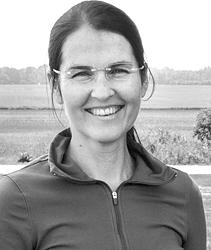Food safety culture is yet another example of the current and future state in food safety: The movement toward being proactive versus reactive. There are still many questions surrounding how companies should be measuring behavior and a lot of companies don’t know where to start. Lone Jesperson, director of food safety at Maple Leaf Foods, provides some guidance in part 3 of Food Safety Tech’s series on food safety culture.
Food Safety Tech: What are the most important behaviors that organizations should be measuring?

Lone Jespersen: I think we need to get the order right. You start by figuring out the metrics, which should drive behavior, not the other way around. If you’re not clear on how you’re going to measure success, then how are you going to know that the behaviors you’ve identified will make a difference to the safety of your products or food?
Ultimately you want to be in a situation where people are looking out for food safety so that if something goes wrong, it’s constructively brought forward and fixed. Predictive and preventive measures are defined and implemented as needed. When talking about food safety—the metrics and behaviors—these depend on the organization’s state of maturity. [For example,] in an organization with a relatively low level of maturity that doubts whether food safety [culture] is something that is going to help the business, they’re mostly checking boxes and conducting food safety tasks because regulators are saying they have to.
So if you’re in that state of doubt, I would look at measuring something like: Are you completing your food safety training? Does that manager complete food safety communication on a regular basis? Has the plant done its risk assessment in a standardized way? Do they have tools and infrastructures in place to meet food safety requirements? That can spill over into a measurement that your plant manager actively enforces the training schedule for food safety. It [becomes] a behavior you can define outright and measure the plant manager on.
The GMA Science Forum takes place April 18–21, 2016 in Washington, DC | LEARN MOREOn the other end of the maturity model, there’s the relatively high level of sophistication and maturity for food safety. For example, a CEO completes a food safety workout session in which he or she sits down and looks at what the plant needs to do to improve food safety, and the decisions are made on the spot. When you’re in that level of maturity, you’re improving your food safety costs, because you have better control of your food safety program and you’ll get more uptime, less downtime, and make product that goes out safely.
We’ve had some great discussions around food safety culture metrics. But I think we’re a little misguided, because we’re not measuring food safety culture, we’re measuring the organization’s performance, and food safety culture is an enabler that is tracked to performance. So if you have a weak culture, it’s reasonable to assume you’ll have higher costs and a higher level of incidents, and less competent individuals. There are some characteristics you can put around the performance of food safety if you have a weak culture. There’s lots of research that shows the connection between organizational effectiveness and organizational culture. I have yet to find a counterargument that says it should be different for food safety culture.
It’s not a food safety culture metric that you need, it’s a performance effectiveness measure. We are looking at culture because we want to improve our performance—for consumer and business protection.





